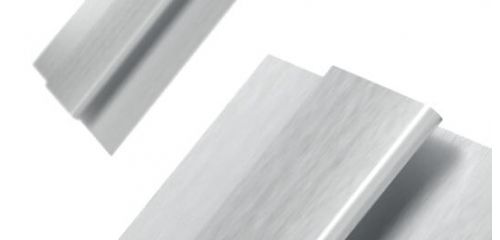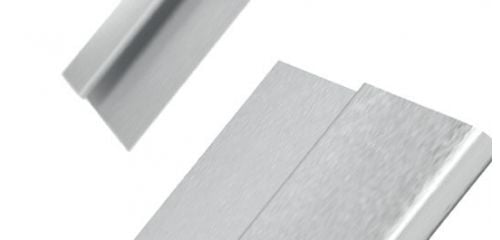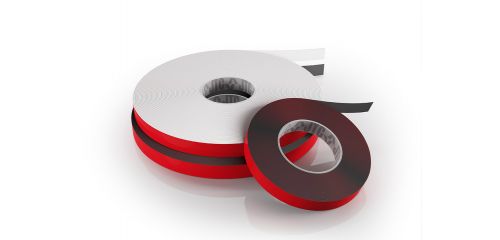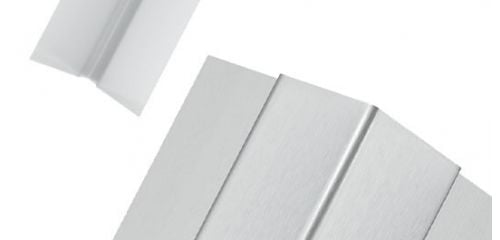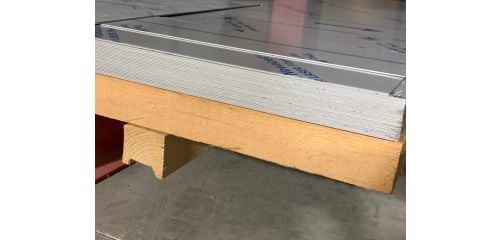Contact us if you would like a metals term explained in plain english.
A B C D E F G H I J K L M N O P Q R S T U V W X Y Z
A
Alloy: A combination of two or more elements which can be metals or a metal and a non-metal. Alloys offer unique advantages to pure metal such as weight, cost, strength and price. In many modern applications, alloys are custom engineered to match specific requirements. Stainless steel is an alloy.
Annealing: Annealing is a heat treatment process which basically allows a metal to become more ductile, and generally improves workability at room temperature. When metal is annealed, it's made hot enough so the atoms are able to realign to an equilibrium state. Cooling must be slow enough so that atoms stay aligned.
Austenitic: Austenitic stainless steels are mainly composed of austenite, a non-magnetic iron allotrop (meaning it can exist in two or more forms), with 18% chromium, and 8% nickel. Austenitic stainless steels are not heat treatable.
B
Binary Alloy: As the name suggest a binary alloy consists of two elements, which could be two metals or a metal and a non-metal.
C
Chromium (Cr): Chromium is a hard, lustrous, gray chemical element with high resistance to tarnish and melting point. Chromium was in use 2,000 years ago, notably by the Chinese. Chromium use exploded when it was discovered it could be mixed with iron to create an extremely corrosion resistant alloy known as stainless steel.
Cold Working: See work hardening.
Corrosion: In industry terms corrosion is an electrochemical process that occurs between metal and the surrounding atmosphere. The process deteriorates the metal and ultimately leads to failure. Rust, or iron oxide, is the most widely known form of corrosion.
D
Ductility: Do not confuse ductility with malleability. Ductility is the ability of a metal to be deformed under tensile stresses, or basically its ability to be stretched.
Duplex: Duplex stainless steels are made with theoretically equal ratios of ferrite and austenite, two iron allotropes, but commercially available duplex stainless is usually closer to a 40/60 mix. Duplex stainless steel is more resistant to localized corrosion, and has approximately twice the strength of traditional austenitic stainless steel such as 304, 316, etc.
F
Ferrous Metal: A term used to describe an alloy that contains iron. Any metal including steel, pig iron, stainless steel, etc made using an iron allotrope is considered ferrous.
G
Gauge: Gauge is abbreviated as ga, and refers to the thickness of the stainless steel or other metal. It's based on the average weight of 41.82 lb (18.96 kg) per square foot per inch thick. This basically means that at a select gauge, a 1 inch pile of said gauge should weigh 41.82 lbs. Most international standards organizations discourage the use of this system, calling it archaic and non-standard. Ferrous and non-ferrous metals use different standards gauge standards.
H
Hardening: Refers to a metalworking or metallurgical process that increases hardness of stainless steel and other metals. There are five methods, including Hall-Petch method, Work Hardening, Solid Solution Strengthening, Precipitation Hardening, and Martenistic Transformation. They all basically translate into the same thing, which is to increase resistance to change on the molecular level.
Heat Treatment: Heat treating includes a broad range of metallurgical processes through which stainless steel and other metals are changed physically and sometimes chemically. There are quite a number of heat treatment processes, including annealing, aging, quenching, tempering, and selective heat treatment.
I
Interstitial Alloy: In an interstitial alloy, the atoms of one material are too small to displace the larger atoms of the other material, so they end up nested in between them, in gaps known as interstices. Steel is an interstitial alloy because the carbon atoms sit between the iron atoms. Stainless steel is a mix of interstitial and substitutional alloys.
Iron Ore: Iron ore is any rock or mineral containing metallic iron. According to the Mineral Information Institute, over 98% of iron currently being mined in the world today is used in steel production.
Martensitic: Martenistic stainless steel is made when austenitic stainless is cooled rapidly enough that the high carbon concentrations are not able to diffuse out of the material on an atomic level. Basically, martenistic stainless has more carbon atoms. It's harder and more ductile than austenitic stainless.
Molybdenum (Mo): This is a medium hardness element with an extremely high melting point and the ability to "harden" metal alloys. Molybdenum is used to create high strength stainless steel alloys among others and composes roughly 0.25% to 8% of the metal.
N
Nickel (Ni): An element that is corrosion resistant, hard, yet ductile, and is magnetic at room temperature. Due to its high melting point and corrosion resistance, Nickel is used as an alloying agent in stainless steel to retain its chemical properties from extreme cold to the melting point.
P
Passivation Layer: Molecular, oxide (corrosion) layers formed on the surface of metals through corrosion that basically protect the metal from further corrosion and damage. Passivation layers vary in thickness and actually grow thicker over time on many materials such as aluminum.
Precipitation Hardening: Also known as age hardening, this method of hardening involves heat treating a metal for prolonged periods of time to allow the formation of "impurities" or different sized particles. This basically serves to harden the material by restricting the movement of atoms within the metal when cooled.
Q
Quenching: A type of heat treatment involving the rapid cooling of stainless steel or some other metal. Quenching helps cool the metal quickly enough so that crystal structures aren't able to form, thus increasing the hardness, as well as so called "toughness." Quenching medias include air, nitrogen, argon, helium, brine (salt water), oil and water.
S
Stainless Steel: A steel alloy with a minimum chromium of 10.5% by mass. The chromium reacts with air and moisture to create a chromium oxide layers that inhibits further surface degradation. It is resistant to corrosion, staining, and rust but is not completely impermeable, and will corrode in environments with poor circulation, low oxygen, or high salinity. Different grades of stainless steel are manufactured for various types of corrosive environments.
Substitutional Alloy: An alloy where the atoms are similarly sized, and unlike an interstitial alloy, the atoms will displace each other instead of nesting. Stainless steel is both a substitutional and interstitial alloy because carbon atoms nest between the iron atoms, but the nickel and chromium atoms displace iron atoms.
T
Tempering: A heat treatment method used to "toughen" metal, as in make it more shock resistant. Once a metal has been hardened through any of the dozen processes, it's once again heated to a temperature below the critical point. Basically, it's heated to a point where some atom reconfiguration is allowed to occur, which reduces excess hardness hardness, and makes the metal more resistant to breakage.
Ternary Alloy: This is simply an alloy created using three elements. With metals, the base element, or primary constituent is iron, and the 2 additional elements are the secondary constituents. Stainless steel is a ternary alloy because it contains iron, chromium, and nickel.
V
Vanadium (V): A hard, silvery gray metal that is both ductile and malleable. It greatly increases the strength of steel when added in small quantities due to the formation of high strength, stable bonds within the metal. Vanadium is also used to create very hard steel for machining applications, surgical instruments, and some cutlery.
W
Welding: A process by which two materials; either metals, thermoplastics, or some other material, is joined. Basically, localized melting takes place between the two materials and a filler material such as welding wire, which cools and forms a high strength joint (if the process was done correctly).
Work Hardening: Processes such as hammering, rolling, bending, stretching, etc strain metal beyond it's yield point and create dislocations. These are essentially areas where additional atoms are pulling at each other. Continued cold working increases dislocations, and eventually the atoms resist all further attempts at dislocation, at which point the material is as hard as it can get without breaking.


